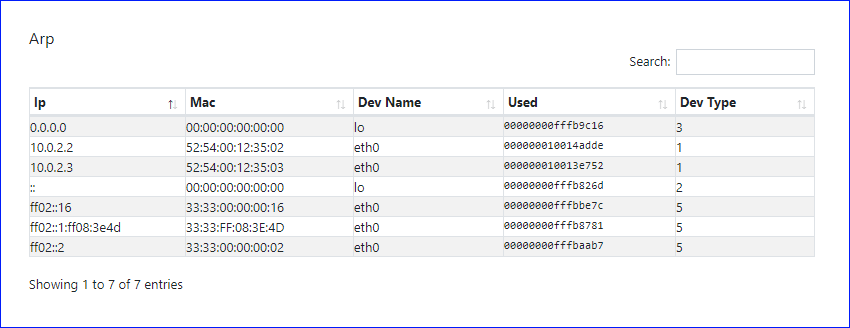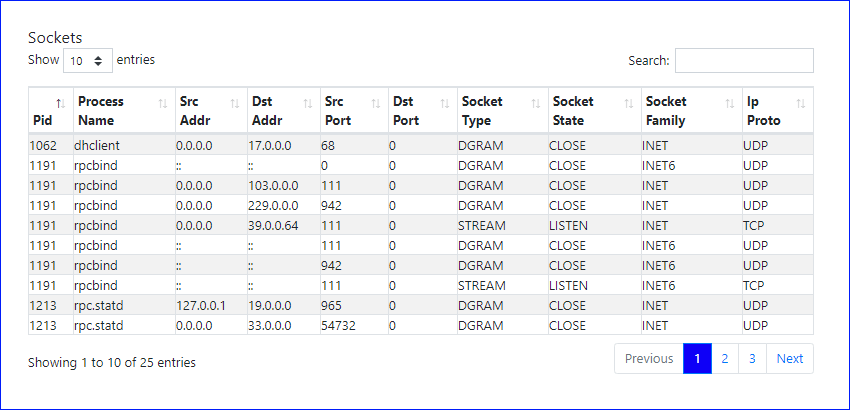Report: Networks
The address resolution protocol table, or ARP table, is the cached set of bindings between IP address (OSI layer 3) and their corresponding MAC address (layer 2). A socket is a logical communication endpoint in the transport layer specific to a machine, protocol, and port. Together they provide a snapshot of network activity on the target system.
Report Data: Arp
Following is the ARP table at the time the memory snapshot was taken of the centos 6 - 2.6.32-696.28.1.el6.x86_64 image from the samples gallery (requires authentication).

The following tables describes each column of the reported data.
| Column | Description | Notes |
|---|---|---|
| Ip | IP (v4 or v6) address registered on the interface | |
| Mac | The Media Access Control (MAC) hardware address of the interface | |
| Dev Name | The network interface device name | |
| Used | ||
| Dev Type |
Report Data: Sockets
Following is a snapshot of the Network:Sockets table from the centos 6 - 2.6.32-696.28.1.el6.x86_64 image from the samples gallery (requires authentication).

The following tables describes each column of the reported data.
| Column | Description | Notes |
|---|---|---|
| Pid | PID of the owning process | |
| Process Name | Name of the owning process | |
| Src Addr | Socket source IP (v4 or v6) address | |
| Dst Addr | Socket destination IP (v4 or v6) address | |
| Src Port | Socket source TCP port | |
| Dst Port | Socket destination TCP port | |
| Socket Type | Socket type | Can be STREAM, DATAGRAM, SEQPACKET, RAW |
| Socket State | Socket state | For example, LISTEN, OPEN, CLOSE, ESTAB, WAIT, ... |
| Socket Family | INET (IPv4) or INET6 (IPv6) | |
| Ip Proto | Socket transport protocol | TCP or UDP |
Forensic Hints
Patterns to look for: unexpected network connections
The same ARP table can be obtained from a running Linux system via the
arp command, and the same set of network sockets can be obtained via
the netstat -atu or ss -p -e -f inet commands; any difference
between these sets (a) read from usermode and (b) derived from memory
inspection should be investigated, as discussed here.